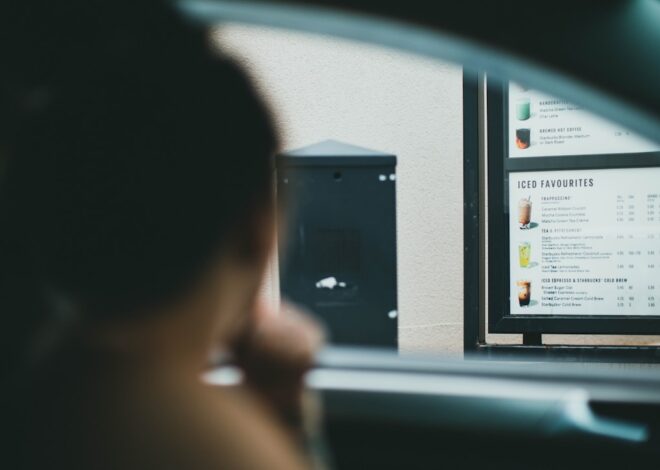
Restoring the Classic 1970 Barracuda: A Timeless Beauty
The 1970 Barracuda is a classic American muscle car that has captured the hearts of car enthusiasts for decades. With its sleek design, powerful engine, and iconic styling, the Barracuda has become a symbol of the golden age of American automotive engineering. The 1970 model year is particularly revered among collectors and enthusiasts for its distinctive body lines and aggressive stance. The Barracuda was available in a range of engine options, including the legendary 426 Hemi V8, which made it one of the fastest and most powerful cars of its time. Its performance on the drag strip and the street solidified its reputation as a true muscle car icon.
The 1970 Barracuda is also known for its unique styling, with its distinctive grille, quad headlights, and bold rear end design. The interior was equally impressive, with high-quality materials and a driver-focused layout that exuded a sense of purpose and performance. The Barracuda was a true driver’s car, with responsive handling and a thrilling driving experience that made it a favorite among enthusiasts. Its timeless design and legendary performance have made the 1970 Barracuda a highly sought-after classic car, with collectors and enthusiasts alike clamoring to own and restore these iconic machines.
Key Takeaways
- The 1970 Barracuda is a classic car known for its sleek design and powerful performance.
- The restoration process involves careful attention to detail and a commitment to preserving the car’s original features.
- Finding authentic parts is crucial to maintaining the authenticity and value of the Barracuda.
- Maintaining the classic look involves using period-correct materials and finishes to ensure an authentic restoration.
- Upgrading for modern performance can involve engine swaps, suspension upgrades, and other modifications to enhance the car’s driving experience.
- Preserving the legacy of the Barracuda involves documenting its history and ensuring it is passed down to future generations.
- Enjoying the ride in a restored Barracuda is a rewarding experience that connects drivers to automotive history.
The Restoration Process
Restoring a 1970 Barracuda is a labor of love that requires dedication, patience, and a keen eye for detail. The restoration process begins with finding a suitable candidate for restoration, which often involves scouring classified ads, online forums, and car shows to find a car that is in need of restoration. Once a suitable candidate is found, the real work begins. The car is stripped down to its bare metal, and every component is carefully inspected for damage or wear. Any rust or corrosion is removed, and the body is carefully repaired and refinished to its original factory specifications.
The engine and drivetrain are also carefully inspected and rebuilt as necessary to ensure that they perform as they did when the car was new. Authenticity is key during the restoration process, so every effort is made to use original or period-correct parts whenever possible. This attention to detail ensures that the finished restoration is as close to the original factory specifications as possible, preserving the authenticity and historical significance of the car. The restoration process can take months or even years to complete, but the end result is a beautifully restored 1970 Barracuda that looks and performs just as it did when it rolled off the assembly line.
Finding Authentic Parts
Finding authentic parts for a 1970 Barracuda can be a challenging task, as many original parts are no longer in production and can be difficult to find. However, there are dedicated suppliers and enthusiasts who specialize in sourcing original and reproduction parts for classic cars like the Barracuda. These suppliers often have extensive networks of contacts and resources that allow them to locate rare and hard-to-find parts for restoration projects. In addition to original parts, there are also high-quality reproduction parts available that are manufactured to exacting standards to ensure a perfect fit and finish.
When sourcing parts for a restoration project, it’s important to do thorough research to ensure that the parts are authentic and accurate for the specific year and model of the Barracuda being restored. This attention to detail ensures that the finished restoration is as authentic and historically accurate as possible, preserving the legacy of the car for future generations. Whether it’s trim pieces, interior components, or mechanical parts, finding authentic parts is essential to achieving a truly authentic restoration of a 1970 Barracuda.
Maintaining the Classic Look
| Aspect | Metric |
|---|---|
| Color Scheme | Neutral tones such as beige, cream, and white |
| Furniture | Antique or vintage pieces |
| Materials | Wood, leather, and metal |
| Patterns | Subtle and traditional patterns like stripes and florals |
| Accessories | Classic and timeless decor items |
Maintaining the classic look of a restored 1970 Barracuda is essential to preserving its historical significance and aesthetic appeal. This involves using authentic or high-quality reproduction parts to ensure that every aspect of the car’s appearance is true to its original factory specifications. From the exterior trim and body panels to the interior upholstery and dashboard, every detail must be carefully considered to ensure that the finished restoration captures the essence of the original car.
In addition to using authentic parts, attention to detail during the restoration process is crucial for maintaining the classic look of the Barracuda. This includes ensuring that all finishes, colors, and materials are accurate for the specific year and model of the car being restored. Whether it’s matching paint colors or sourcing period-correct upholstery materials, every effort must be made to ensure that the finished restoration is an accurate representation of the original car. This dedication to authenticity ensures that the classic look of the 1970 Barracuda is preserved for future generations to appreciate and enjoy.
Upgrading for Modern Performance
While maintaining the classic look of a 1970 Barracuda is important for preserving its historical significance, many enthusiasts also choose to upgrade their cars for modern performance. This can involve installing modern suspension components, brakes, or even engine upgrades to improve the car’s handling and power. These upgrades can enhance the driving experience while still preserving the classic look and feel of the Barracuda.
When upgrading a 1970 Barracuda for modern performance, it’s important to carefully consider which components will best complement the car’s original design and character. For example, modern disc brakes can greatly improve stopping power without compromising the classic appearance of the car. Similarly, modern suspension components can improve handling without detracting from the car’s original ride quality. Engine upgrades can also be done in a way that enhances performance while still maintaining the classic look under the hood.
Preserving the Legacy

Preserving the legacy of the 1970 Barracuda is a responsibility that falls on the shoulders of enthusiasts and collectors who are dedicated to maintaining these iconic cars for future generations to enjoy. This involves not only restoring and maintaining individual cars but also documenting their history and significance within the broader context of automotive history. Preserving original examples of these cars in their factory-correct condition is essential for ensuring that future generations can appreciate and understand their historical significance.
In addition to preserving individual cars, enthusiasts also play an important role in educating others about the legacy of the 1970 Barracuda through events, shows, and publications. By sharing their knowledge and passion for these cars, enthusiasts can help ensure that their legacy lives on for years to come. This can involve everything from hosting car shows and meetups to writing articles and books about these iconic machines. By actively preserving the legacy of the 1970 Barracuda, enthusiasts can ensure that these cars continue to be appreciated and admired for generations to come.
Enjoying the Ride
Ultimately, enjoying the ride is what owning a 1970 Barracuda is all about. Whether it’s taking a leisurely cruise on a sunny day or pushing the car to its limits on a race track, driving a restored Barracuda is an experience like no other. The thrill of hearing its powerful engine roar to life, feeling its responsive handling through every turn, and basking in its timeless design is what makes owning a 1970 Barracuda so special.
For many enthusiasts, owning and restoring a 1970 Barracuda is not just about preserving history; it’s about creating memories and experiences that will last a lifetime. Whether it’s attending car shows with fellow enthusiasts or embarking on road trips to explore new destinations, owning a restored Barracuda opens up a world of opportunities for enjoyment and camaraderie. The joy of driving such an iconic machine is something that can only be truly understood by those who have experienced it firsthand, making it an experience that is truly one-of-a-kind.
If you’re a fan of classic cars like the 1970 Barracuda, you’ll love this article on the history of medieval taverns and their role in society. Check it out here to learn more about the fascinating world of medieval drinking establishments.
FAQs
What is a 1970 Barracuda?
A 1970 Barracuda is a classic car produced by Plymouth, a division of the Chrysler Corporation. It is a part of the Barracuda model line, which was first introduced in 1964.
What are the key features of a 1970 Barracuda?
The 1970 Barracuda is known for its distinctive styling, including a sleek body design and iconic “Cuda” badging. It was available in several trim levels, including the base model, Gran Coupe, and high-performance ‘Cuda. It also offered a range of engine options, including the powerful 426 Hemi V8.
How many 1970 Barracudas were produced?
In 1970, Plymouth produced a total of 55,499 Barracudas. Of those, 14,479 were the high-performance ‘Cuda model.
What is the value of a 1970 Barracuda today?
The value of a 1970 Barracuda can vary widely depending on its condition, rarity, and originality. A fully restored and well-maintained example can fetch six-figure sums at auction, while a project car or one in poor condition may sell for significantly less.
Is the 1970 Barracuda a collectible car?
Yes, the 1970 Barracuda is highly sought after by collectors and enthusiasts due to its iconic design, performance capabilities, and limited production numbers. It is considered a classic muscle car and is often featured at car shows and in automotive publications.


